
- City Tours >

Chicago Pedway

City Hall. Photo by Eric Allix Rogers
Take a warm walk through a portion of the Pedway system to discover the fascinating “city below the city” used by Chicagoans every day.
120 N. LaSalle Street
During this 1 hour and 45-minute tour you will navigate the Pedway, learn about its history and why the City felt a Pedway system was an essential part of the urban design plan, discover the diversity of Pedway businesses and find linkages to rail and subway transit. You will also experience the interiors of a few of Chicago’s famous historic and contemporary buildings.
Know before you go:
- The tour begins at 120 N LaSalle St. at the Pedway entrance located on the south side of the building that’s separate from the lobby entrance.
- This tour is not ADA-accessible. The tour route is approximately 1.5 miles and stairs are required.
- There are no public restrooms available on this tour.
- Many tours sell out. To guarantee your space advance reservations are strongly recommended.
- Ticket price includes entrance to the Chicago Architecture Center within 7 days of your tour. View the CAC's hours .
- Your safety is our priority. The itinerary of this tour may be altered in accordance with health and safety policies and considerations.
Photos from this tour

120 N. LaSalle

Macy's Pedway corridor

Radisson Blu Hotel lobby. Photo by Eric Allix Rogers
Tour reviews
What is the difference between premier and essential walking tours.
Essential walking tours depart from the center at 111 East Wacker; they are free for all CAC members. Premier walking tours depart from other locations across Chicago, including neighborhood tours. Premier tours are discounted for individual, dual and family memberships and free for Deco level and above.
What accessibility and safety options do you provide?
The CAC welcomes all visitors and is committed to making its offerings feel safe and accessible to everyone. Learn more about accessibility options.
Where do the tours begin?
Many of our tours depart from the CAC at 111 E. Wacker. Your ticket (regular or print-at-home) will indicate the departure location. If you have any questions about your tour’s meeting place, give us a call at 312.922.TOUR (8687).
For tours that don’t begin at the CAC, please consult the individual tour webpage, or call 312.922.TOUR (8687) for details on the meeting location.
Buildings of Chicago

University of Chicago’s Keller Center
- Neighborhood: Hyde Park
- Style: Modernism, Contemporary
- Architect: Farr Associates, APMonarch

Nicholas J. Melas Centennial Fountain
- Neighborhood: Streeterville
- Architect: Lohan and Associates

- Neighborhood: River North
- Style: Contemporary
- Architect: Studio Gang

Art Institute of Chicago
- Neighborhood: Loop
- Style: Beaux Arts
- Architect: Shepley, Rutan & Coolidge

Auditorium Building
- Architect: Adler & Sullivan

Bahá’í House of Worship
- Neighborhood: Wilmette
- Architect: George A. Fuller, Louis Bourgeois

Charnley-Persky House
- Neighborhood: Near North Side
- Architect: Adler & Sullivan, Frank Lloyd Wright

Chicago Athletic Association Hotel
- Style: Venetian Gothic
- Architect: Henry Ives Cobb

Group & Private Tours
CAC offers discounted rates and customized options for groups and tour operators. Learn about options here.

Free Center Entry with Your Ticket
Ticket price includes entrance to the Chicago Architecture Center within 7 days of your walking or bus tour.


Events & Programs

CAC Calendar

CAC Design store
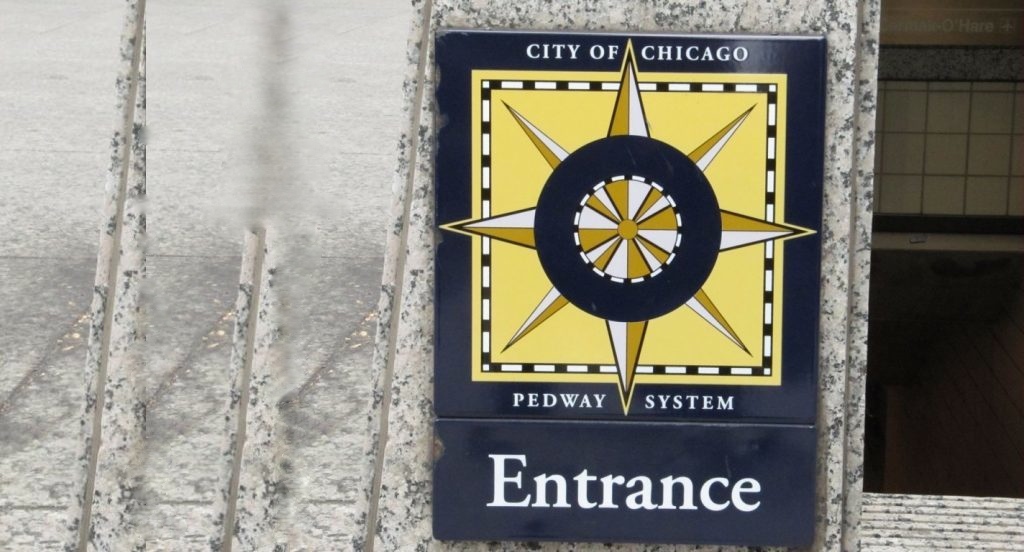
A visitor’s guide to navigating the Chicago Pedway System
Last updated on September 3, 2019 by Amanda Scotese
When we venture downtown, with the snow of winter or the humidity of summer, the Chicago Pedway System comes in handy. This mostly underground system of passages connects buildings so that you can walk downtown while avoiding the elements.
You know you’re in the Pedway System when you see this symbol. In this network of passages that connect buildings, train stations, and parking lots, you find government offices, food courts, and most importantly during wintertime — warmth. As part of downtown infrastructure, the Pedway eases foot traffic on street level and provides a quicker route, as you don’t have to wait at any stoplights. Pretty much everyone you pass is in a hurry like you.
That is, if you know where you’re going. A few maps of the Underground Pedway System are out there, but some only show the location of the passages, which isn’t enough to help the unfamiliar user confidently access this system of passages that goes both underground and above street level.
A different approach to map-making is necessary to elucidate the Pedway System. This map designed by my tour company, Chicago Detours, is a helpful guide with the user experience in mind as it includes all kinds of tips on navigating the system. In addition to showing the passages, this map marks all stairways and buildings that connect with the Pedway to explicitly show where people are permitted to enter a building . Check out the two-page map and you’ll find where to access the 40-plus-block-long network of passages, the disparate open hours for different sections, and tips on navigating the system.
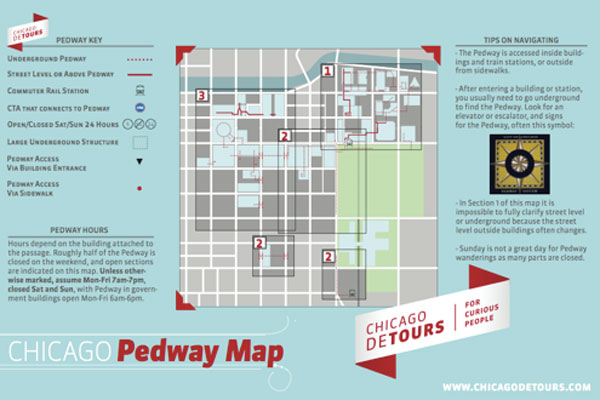
While some suspect that the Chicago Pedway System involves underground tunnels that connect buildings downtown, really they are not tunnels but passages, like hallways, that create a network between buildings and places of transport.
The Pedway provides a convenient escape from Chicago’s challenging weather. However, it is not necessarily a space where you would want to spend an afternoon. The mostly underground system is essentially a basement (see the area by Macy’s pictured below), and you’ll find better architectural eye candy on street-level. What’s really exciting about the Pedway is the discovery that the city is navigable in spaces under our feet. It’s about uncovering the unseen layers of the city.
Beyond Chicago Detours , which offers an interior architectural tour that includes magnificent lobbies, other tour companies venture underground. Comedian Margaret Hicks of Chicago Elevated , aka the “Pedway Lady,” knows every inch of the system and offers tours of the Pedway several days a week.
- # Chicago architecture

About Amanda Scotese
Amanda Scotese started the tour company Chicago Detours , so she can have a legitimate excuse for wandering Chicago and geeking out on architecture. She dug in to anything Chicago, especially architecture and urban geography, through the Masters of Arts Program in the Humanities at the University of Chicago. Her travel writing has appeared in Rick Steves’ Italy travel guidebooks, Trazzler, the San Francisco Bay Guardian, and the Chicago Detours blog .
From this blog post
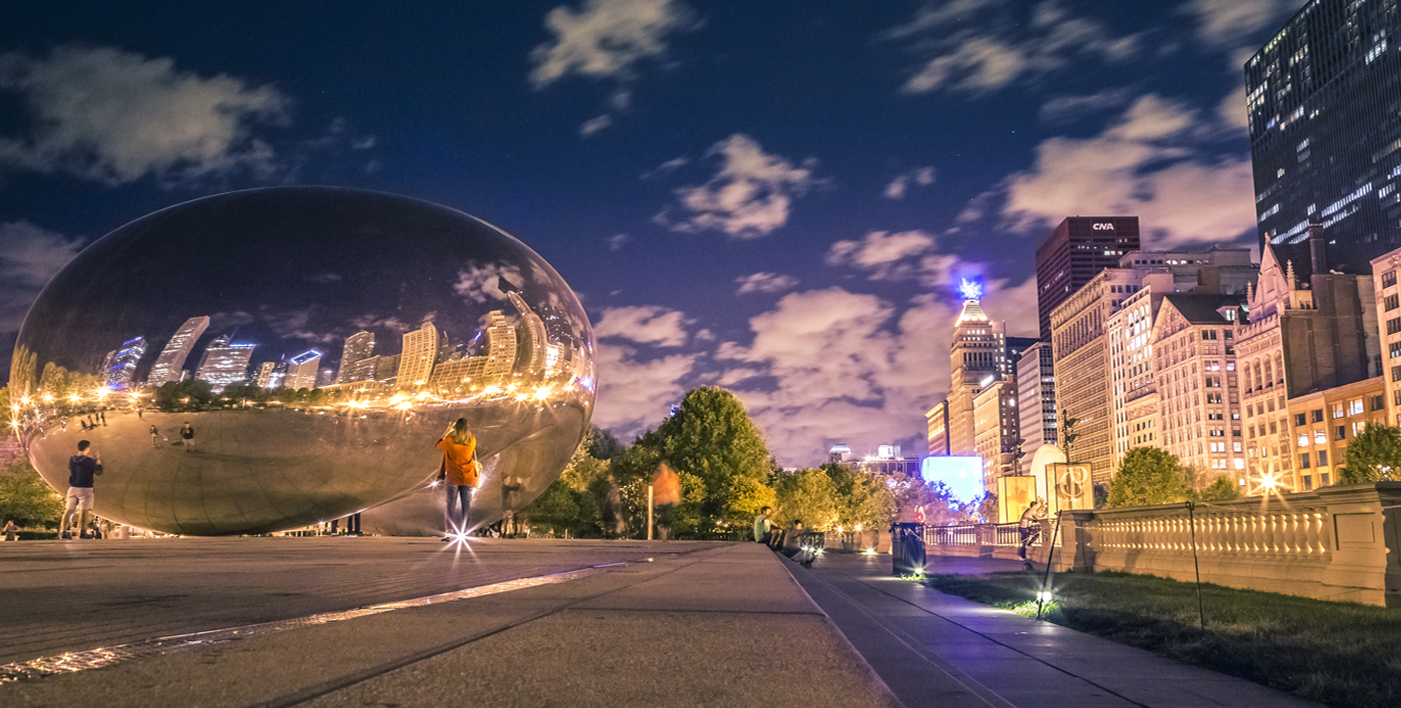
Explore hotels, flights, deals, and more
Plan your trip.
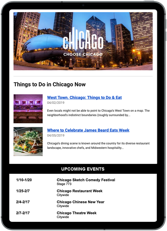
Chicago Newsletter
Stay in the know.
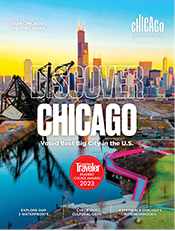
Visitors Guide
Start planning today.
Get the guide
Your Favorites
Quick access links.
Site search
- Los Angeles
- San Francisco
- Archive.curbed.com
- Homes for rent
- Homes for sale
- Curbed Comparisons
- Neighborhoods
- Development
- Architecture
- Historic Preservation
- Transportation
Filed under:
- Chicago Transportation
- Transportation Week
A walk through the Pedway: Mastering the Loop’s network of underground tunnels
A lifesaver or pedestrian purgatory?
/cdn.vox-cdn.com/uploads/chorus_image/image/56791947/shutterstock_1026971659.1506013810.jpg)
Chicago is known for a variety of transportation: busy airports , a popular riverfront , and a strategic rail transit hub . However, the city’s downtown is perhaps best traveled by foot. It’s the only way to explore a series of underground tunnels and bridges known as the Pedway that link more than 40 blocks in the Loop.
Plus, knowledge of the underground path comes in handy during the city’s extreme cold and unpredictable seasons. Tens of thousands of travelers use parts of the roughly five-mile pathway everyday which connects to CTA stations, public buildings, and private offices, according to the city.
Despite living in Chicago for almost two decades, I find myself chronically underdressed each winter and usually in need of protection for impractical footwear making it from the L to meetings that take place in the Loop. For this reason, I have become quite familiar with the downtown Pedway system.
:no_upscale()/cdn.vox-cdn.com/uploads/chorus_asset/file/14561292/shutterstock_1026971854.jpg)
History of Chicago’s underground tunnel system
The Chicago Pedestrian Walkway System works in conjunction with street level paths that connect to almost 50 buildings in the Loop. The longest continuous section of the Pedway runs east-west from 120 N. LaSalle Street to the Millennium Park near Columbus Drive and Randolph Street with various points radiating north and south.
The system includes several shorter sections, at times serving only as a connection between buildings and CTA or Metra Stations. Nearly every civically significant building in the Loop, including City Hall and the James R. Thompson Center, is connected by a section of the Pedway.
The system opened in 1951 with the completion of tunnel between the Milwaukee-Dearborn Subway and the State Street Subway, connecting what is now the Red and Blue lines. In 1966, the former Brunswick Building at 69 W. Washington Street was linked to the Civic Center. Then in late 1980s a connection was made to the Millennium Metra station which was completed in 2005. Another extension of the Pedway was added in 2010 which opened up access to north of Lake Street to Aqua Tower.
While the notion of an indoor pedestrian subway in Chicago existed as early as the 1920s, it took the success of indoor suburban malls and the transition of State Street from that ‘Great Street’ to a series of discount stores, pawn shops, and burlesque theaters to encourage city planners to push for all-weather pedestrian walkways. Several comprehensive plans presented in the late 1960s urged Chicago to consider connecting commercial and civic buildings in the Loop.
In its primary civic role, the Pedway allows underground access between City Hall, the Daley Center, the Cook County Office Building, and the Thompson Center which bridges these government buildings. It also provides ingress to the private sector and public citizens to Daley Center Court rooms, offices of the Cook County Clerk, and the Central Illinois Secretary of State Facility. Between these are a super colony of businesses, including dry cleaners, salons, shoe repair shops, and restaurants and bars.
However, the Pedway has issues with inconsistent signage and an official map that lacks dozens of informal pathways. Some of these walkways are through private property or in many cases across commuter or rapid transit train platforms. Many Pedway routes are marked with blue and yellow compasses set into the terrazzo floor, but others are designed to match the colors and aesthetic of the building it connects to which can be misleading.
Some areas of the Pedway are aggressively patrolled with staff and cameras, while others appear to be entirely void of any attention. As sections of the Pedway are operated by individual building owners, not all doors remain open in the evenings or weekends.
:no_upscale()/cdn.vox-cdn.com/uploads/chorus_asset/file/9296299/IMG_6255_17.jpeg)
A walk through the Chicago Pedway
Earlier this week, I descended into the Chicago Pedway beneath the Roger Brown mural of Daedalus & Icarus at 120 North LaSalle, towards City Hall and the County Building, where the entrance was clearly marked with the Pedway system compass. This is a good sign, I thought. As the Pedway travels beneath buildings, it reflects the building just above through matching designs or materials, providing a more kickable example of the architecture, as the Pedway is public space. In the case of 120 North LaSalle, the same gray-black marble is repeated in the hallway, transitioning through a steel doorway to the City side of the City Hall/County Building, where the walls are tiled in the black and grey of the Chicago Police Department.
Cadet training occurs in this area of the basement of City Hall, as well as case research. There’s also a bike room down there for city employees. The Pedway forces itself upstairs from here, and into the first-floor lobby of the City Hall/County Building. The path continues into the county building, and down an escalator facing east to Clark Street. Getting back into the Pedway when it is no longer underground can be tricky. This was my first instance of mild confusion, but I learned that my intuition to head to the down escalator was a good one.
The bowels of the Daley Center mimic the building above, including glossy terrazzo floors, tan Roman brick and plate glass—something like the International Style gone casual. The foot traffic really picks up in this portion of the Pedway, as Chicagoans make their way to file forms, apply for licenses, obtain certificates and go to court. The directory within this area is a useless piece of brass, indicating that picnic permits could be obtained if one walks towards the direction of a solid brick wall.
:no_upscale()/cdn.vox-cdn.com/uploads/chorus_asset/file/9296313/IMG_6235_6.jpeg)
I observed a nervous woman in an Anthony Rizzo jersey briefly checking out the directory before bolting in the direction of the George W. Dunne Cook County Office Building, only to suddenly pivot on a clipped expletive before turning around in the opposite direction.
Next to the Liquor License Appeal Commission Offices, is a Starbucks with a tiny patio, quietly piping music into the heavily cooled air. The Pedway is known as a welcome respite from the harsh winds and cold winters, but it can also provide relief from late summer heat.
The Pedway splits off here, with one branch headed towards the Dunne Office Building and the other headed towards the Red Line and Block 37.
Within the George W. Dunne Cook County Office Building are the Pedway shops including Angileri’s Barber Shop, Around the Clock Repair, and an entrance to Trattoria No. 10. Doubling back towards the east end of the Pedway is the mezzanine to the State Street Subway, Block 37, and the Red Line near Macy’s.
This portion of the Chicago Pedway dates to 1989, but was brightened in 2013 by the addition of 22 art glass windows. The collection, once part of the Smith Museum of Stained Glass Windows at Navy Pier, includes designers part of the American Victorian stained glass movement like Louis Comfort Tiffany. Here, the omnipresent florescent light of the rest of the Pedway is replaced by brilliantly colored faceted glass set into innovative compositions and lit from behind.
:no_upscale()/cdn.vox-cdn.com/uploads/chorus_asset/file/9296343/IMG_6241_4.jpeg)
Nearby, the entrance to the Cultural Center is marked by a simple postmodern rotunda, perhaps evocative of the treasures within the building, such as the Grand Army of the Republic Hall and Preston Bradley Hall, home of a 38-foot Tiffany Favrile glass dome. Both spaces are within the same building but represent two distinct decorative moods.
East of the Cultural Center and heading towards Millennium Station, the Pedway takes a dark turn. The nearly 20-year effort to turn the cavernous, dank underground of Millennium Station into a modern terminal didn’t affect all of the spaces, and many still appear to be under construction, particularly the musty and littered entrance corridors. Bare concrete floors and dusty utility lights give way to the Millennium Station Concourse, with its cool blue terrazzo floor with pedestrian lanes, a gentle design reminder to keep movement orderly while moving through the space during rush hour.
:no_upscale()/cdn.vox-cdn.com/uploads/chorus_asset/file/9296375/IMG_6252_2.jpeg)
Close to 20,000 people board Metra and South Shore Line trains daily, many of them working the Pedway to shave off precious seconds from their commute from offices downtown to awaiting trains. Fans of the Batman franchise will remember this area from 2008’s The Dark Knight. Batman sped through the concourse on the Batpod with the same ferocity as a sneaker and white tube sock suburbanite, frantic to catch her Union Pacific Northwest to Arlington Heights that leaves at 5:05 p.m.
Mbar, within the station, and perhaps the Pedway’s only official bar (as Infields is technically located inside Macy’s), provides commuters with drinks and snacks before their rides home. I watched a weary professional order an “extra-large Chard” from the bartender, who emptied out the cold coffee from her mug and filled it with Chardonnay, as travelers on commuter trains may choose to take their beverages to go.
North of Lake Street and accessible only above ground, is the second largest segment of the Pedway, connecting Michigan Plaza at 205 N. Michigan Avenue, to the Swissotel Chicago. The western-most entry point to this portion of the Pedway was difficult to find. I initially followed the wrong escalator down once inside Michigan Plaza and into a private area where I was chastised for taking a photograph of a particularly unhelpful sign.
:no_upscale()/cdn.vox-cdn.com/uploads/chorus_asset/file/9296463/IMG_6215_11.jpeg)
The Pedway here, toted by neighbors as beneath the New East Side micro neighborhood, extends to several hotels, including the Fairmont Hotel and the Hyatt Regency, and takes on a decidedly different character than the larger portion of the Pedway. Spaces along this stretch are cleaner and carpeted, and have more in common with hotel hallways than the larger portion of the Pedway connecting civic and commercial buildings.
With only three residential buildings boasting connections to the Pedway, specifically the Heritage at Millennium Park, the Park Millennium, and Aqua Tower, residents of the area were disappointed that the Pedway did not continue east once it was connected to Aqua in 2009. Despite the limited access to residential developments, this area of the Pedway seems popular with young parents and dog owners during the day, as I dodged several sleepy toddlers in strollers and joyful terriers.
:no_upscale()/cdn.vox-cdn.com/uploads/chorus_asset/file/9296475/IMG_6251_3.jpeg)
The route became particularly confusing as I approached the Hyatt Regency, where several entrances and pathways are unmarked. Twice I ended up going down the wrong hallway and was plunged into the perpetual darkness of Lower Wacker Drive with no Pedway compass in sight. Here I ran into a young man who seemed to lose all hope in finding the Central Auto Pound. Was this some sort of pedestrian purgatory?
I asked a parking lot security guard for directions back down into the Pedway, heading south on lower Columbus Drive at his suggestion. When I arrived at what I heard to be the entrance to the Pedway, I found a stairway leading up. Did the security guard mistake my question about the Pedway entrance as one asking how to just simply get out of here?
:no_upscale()/cdn.vox-cdn.com/uploads/chorus_asset/file/9296781/IMG_6260.jpeg)
I ascended the steps onto upper Columbus Drive, a street full of hotels, commercial buildings and general pedestrian unfriendliness that is more evocative of suburban Schaumburg than the Loop. Following an escalator down into the Pedway connected to Aqua, back on track towards the Swisshotel.
I thought about the simplicity of Chicago’s street grid system, creating a zero point at State and Madison streets that has assisted Chicagoans to get where they are going since 1909, against the intricacies and colloquial habits of the Pedway system.
There is room for improvement, particularly in terms of increasing the number of signs and making them consistent overall, but with three levels to Wacker Drive, neighborhoods and the grid system slashed by highways, diagonal streets and boulevards, knowing how to get around in Chicago is often an experience that maps and signs cannot teach. The only way to master the Chicago Pedway is on foot racking up the underground miles step by step.
Next Up In Chicago Transportation
- Chicago traffic was the second worst in the nation in 2019, says new report
- Electric scooters are coming back to Chicago. Here’s what the city learned.
- Here’s why you should bike year-round in Chicago. Even in winter.
- Chicago’s new transportation commissioner comes from architecture firm Studio Gang
- Chicago is getting more bus-only lanes. Could they alleviate congestion?
- Chicago’s new ride-hailing tax begins now, and it’s the country’s highest fee
Share this story

Transportation
Pedway--downtown pedestrian walkway system.
Chicago’s downtown pedestrian way system, the Pedway, lies in the heart of the city. This system of underground tunnels and overhead bridges links more than 40 blocks in the Central Business District, covering roughly five miles.
Used by tens of thousands of pedestrians each day, the Pedway connects to public and private buildings, CTA stations and commuter rail facilities.
Development of the Pedway began in 1951, when the City of Chicago built one-block tunnels connecting the Red Line and Blue Line subways at Washington Street and Jackson Boulevard. Since then, both public and private investment have expanded the Pedway, and the system now connects more than 50 buildings.
The Pedway is a safe, quick and convenient way for pedestrians to travel downtown—especially in the winter and during times of rain or snow. The Pedway also benefits traffic by reducing the conflict between vehicles and pedestrians, resulting in fewer accidents and better traffic flow.
Pedway map and legend

IMAGES
VIDEO
COMMENTS
Chicago Pedway. Discover Chicago’s underground Pedway and uncover its history, unique businesses and links to transit, while visiting notable historic and modern buildings. Next available tour date: November 1, 2024.
Learn how to navigate the underground network of passages that connects buildings, train stations, and parking lots in downtown Chicago. Find tips, maps, and tours of the Pedway System with Chicago Detours and other companies.
It’s the only way to explore a series of underground tunnels and bridges known as the Pedway that link more than 40 blocks in the Loop. Plus, knowledge of the underground path comes in handy ...
Grab your friends on a rainy day for a spontaneous adventure and uncover the hidden maze beneath Chicago’s busy streets! Click here to view a comprehensive map of the Pedway, complete with key areas, entrances, and other information.
Come experience Chicago's famous "Pedway" – the mysterious underground tunnels downtown that keeps us all warm & dry in bad weather. Wandering the Pedway, through hidden corridors of stained glass and even underground swimming pools, you'll access interiors that seem to come up out of nowhere.
The Pedway is a safe, quick and convenient way for pedestrians to travel downtown—especially in the winter and during times of rain or snow. The Pedway also benefits traffic by reducing the conflict between vehicles and pedestrians, resulting in fewer accidents and better traffic flow.